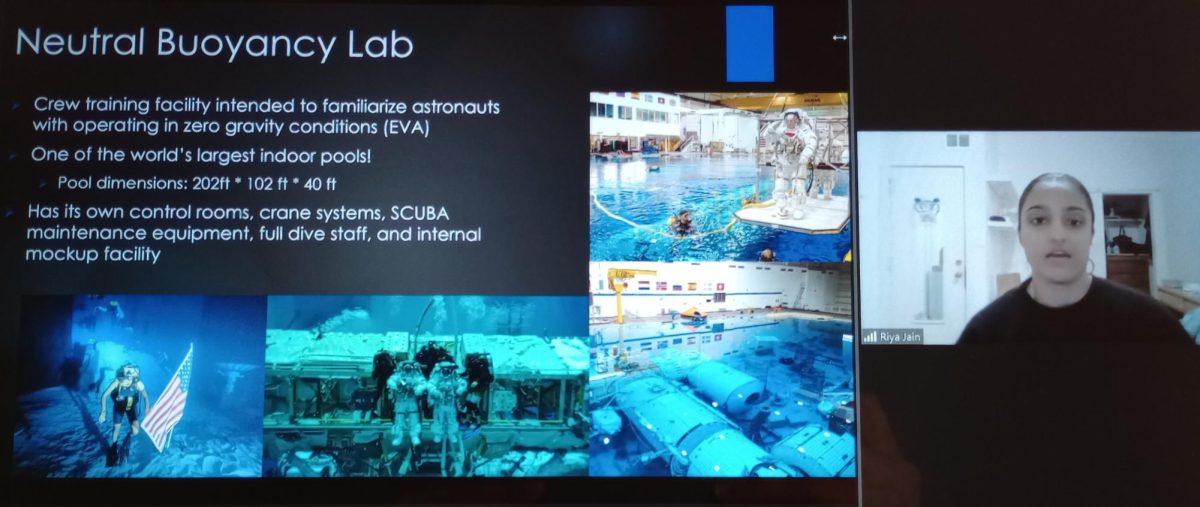The world of science, technology, engineering, and mathematics is one that inspires many. However, it is often dominated by a narrow demographic, one that is not representative of today’s problem solvers and thinkers. To raise awareness about this inadequacy, Dublin High’s SWENext club hosted a virtual guest speaker event on Friday, February 16 with Riya Jain from NASA, who shared her experience and advice as a woman in engineering.
SWENext is a branch of Society of Women Engineers (SWE) and consequently aims to advocate for women and other minorities in STEM, empowering them to pursue careers in the engineering industry. With dozens of students at Dublin High already showing interest in this field through their enrollment in the school’s engineering academy, Jain’s success story offered insight into the mechanical engineering realm as well as her own journey in it.
“Being any kind of minority in STEM can be pretty daunting. I definitely walked into work and realized I was one of the only women there and also one of the only brown people there. I grew up in the South Bay, so it was a wild feeling for me,” Jain shared as she discussed her experience in the workforce.
Jain’s exploration of mechanical engineering began in high school. “When I was in high school, I did not have a 4.0. I think what made me stand out was my involvement in outside organizations, which I was really passionate about.” Jain was the president of her school’s robotics club but was also heavily involved in orchestra and film. Finding extracurriculars related to her career of interest helped her gain a better understanding of what engineering looked and felt like. Meanwhile, pursuing creative outlets allowed her to avoid burnout. “Find a balance in your life that works for you,” she advised.
Internships subsequently became a key part of Jain’s learning experience once she was accepted into UC Berkeley. In fall of 2022, she had her first NASA internship at the Neutral Buoyancy Laboratory, a crew training facility where she experienced the zero-gravity effect of a buoyant force pool. In the following years, she explored a more technical engineering role, like system test engineering with vacuum chambers. More recently, she worked in intravehicular activities and operations at the Johnson Space Center, figuring out how to repair, maintain, and upgrade hardware as well as communicate those instructions to crew on board. “It was a cool way for me to learn about how engineers can use their technical knowledge to coordinate with different groups of people and work with hardware,” Jain reflected.
However, despite the value of gaining technical skills in one’s career field, Jain highlighted an equally important topic: soft skills. “My entire interview for NASA was non-technical. I submitted my resume, got to this thirty-minute interview, and all they were asking me was about how well I work with people and how I problem-solve.” At the end of the day, many technical skills can be acquired on the job simply because students frequently lack exposure to them in school. Jain therefore emphasized the importance of being able to pitch oneself as a person in addition to an engineer.
Jain’s last piece of advice was more fundamental: she encouraged her audience to try to live in the moment. “Especially when I was in high school, I was like, ‘Well I need to go to college, and then I need to get this job, and retire at this age.’ I think it’s really important to focus on doing the best you can at what you’re doing,” Jain explained. For students at Dublin High, this could look like getting involved in STEM extracurriculars, interacting with fellow engineering students, and realizing the next course of action from there.
“The times I’ve struggled most with being an engineer was when I felt like I had nobody I could talk to about it. So I think the most important thing to me during my journey was finding a community of people—being in engineering clubs, making friends with the interns I worked with, building that community of people who understood what it was like to struggle a little bit,” Jain concluded.




































